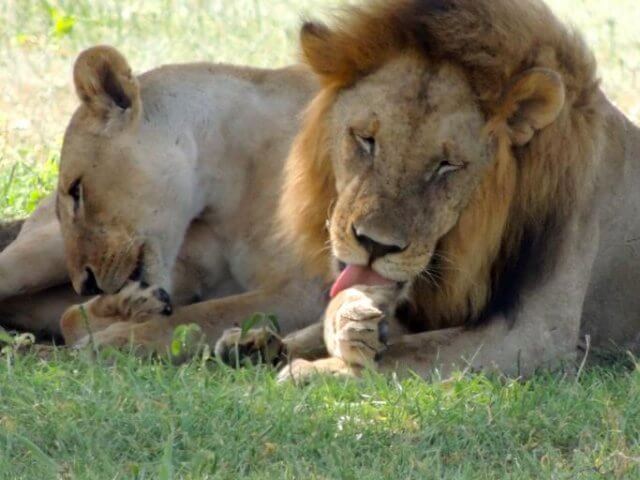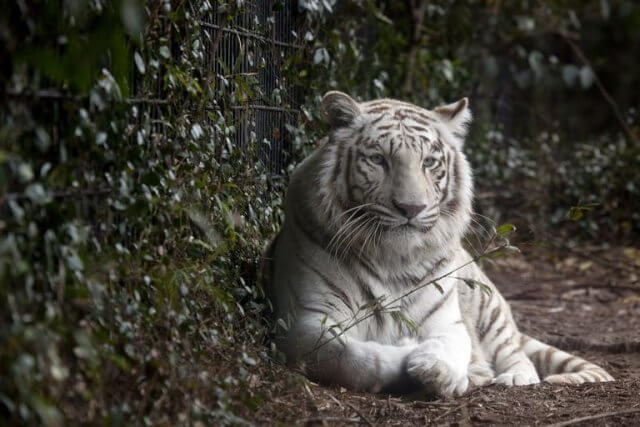Roaring Wonders: Exploring the World of Big Cats
Roaring Wonders:
Exploring the World of Big Cats is an exciting and educational journey into the fascinating world of these majestic creatures. From the powerful roar of the lion to the stealthy movements of the leopard, big cats have captured the imagination of humans for centuries. In this exploration, we will delve into the lives, behaviors, and habitats of these incredible animals, learning about their unique adaptations and the challenges they face in the wild. Join us as we discover the wonders of big cats and gain a deeper understanding and appreciation for these magnificent creatures.
The Majestic Beauty of Lions: A Closer Look at the king of the savannah, Roaring Wonders
The lion, also known as the king of the savannah, is one of the most iconic and majestic creatures on the planet. With its powerful roar and regal appearance, it has captured the hearts and imaginations of people for centuries. In this article, we will take a closer look at the beauty and wonder of lions, and explore the fascinating world of these magnificent big cats.
Lions are part of the Felidae family, which includes all species of cats. They are the second-largest living cat species, after the tiger, and are found in various parts of Africa and Asia. The most well-known and recognizable species is the African lion, which is found in sub-Saharan Africa. These big cats are known for their distinctive manes, which are unique to male lions and can range in color from blonde to black.
One of the most striking features of lions is their impressive size and strength. Male lions can weigh up to 550 pounds and reach a length of 10 feet, while females are slightly smaller, weighing around 400 pounds and measuring up to 9 feet in length. Their muscular bodies and sharp claws make them formidable hunters, capable of taking down prey much larger than themselves.
Lions are also known for their social behavior, living in groups called prides. A pride can consist of up to 30 lions, including females, their cubs, and a few male lions. The females are the primary hunters, working together to take down prey for the entire pride. Male lions, on the other hand, are responsible for protecting the pride and its territory. They use their loud roars to communicate with other prides and mark their territory, which can cover up to 100 square miles.
The roar of a lion is one of the most recognizable sounds in the animal kingdom. It can be heard up to 5 miles away and is used for various purposes, such as communication, intimidation, and attracting mates. The roar is produced by the lion’s vocal cords, which are larger and more flexible than those of other cats, allowing them to produce a range of vocalizations.
In addition to their physical and social characteristics, lions also have a rich cultural significance. They have been featured in various mythologies and religions, often symbolizing strength, courage, and royalty. In many African cultures, the lion is seen as a sacred animal and is often depicted in traditional art and ceremonies.
Unfortunately, the population of lions has been declining in recent years due to various threats, including habitat loss, poaching, and human-wildlife conflict. According to the International Union for Conservation of Nature (IUCN), the African lion is listed as a vulnerable species, with only around 23,000 individuals remaining in the wild. Conservation efforts, such as protected areas and anti-poaching measures, are crucial in ensuring the survival of these magnificent creatures.
In conclusion, the lion is a truly remarkable and awe-inspiring animal. Its physical strength, social behavior, and cultural significance make it a fascinating subject to study and admire. However, with their population declining, it is important for us to appreciate and protect these majestic creatures for future generations to come. As we continue to explore the world of big cats, let us remember the importance of preserving the beauty and wonder.
Unleashing the Power of the Tiger: A Journey into the Life of this Fierce Predator
The tiger, with its majestic stripes and powerful presence, has long captured the imagination of humans. Revered in many cultures as a symbol of strength and courage, this fierce predator has also been feared and hunted by humans for centuries. But beyond its reputation as a ferocious hunter, the tiger is a complex and fascinating creature with a rich and diverse history.
The tiger belongs to the genus Panthera, which also includes lions, leopards, and jaguars. There are six subspecies of tigers, each with its own unique characteristics and habitat. The most well-known subspecies is the Bengal tiger, found in India, Bangladesh, Nepal, and Bhutan. Other subspecies include the Siberian tiger, Sumatran tiger, Indochinese tiger, Malayan tiger, and South China tiger.
Tigers are the largest of all big cats, with males weighing up to 660 pounds and measuring up to 10 feet in length. They are solitary animals, preferring to hunt and live alone, except during mating season. Their distinctive orange and black stripes serve as camouflage in their natural habitat, allowing them to blend in with the tall grass and shadows of the forest.
These powerful predators are known for their incredible strength and agility. They can run at speeds of up to 60 miles per hour and leap up to 30 feet in a single bound. Their muscular bodies and sharp claws make them formidable hunters, able to take down prey much larger than themselves. Tigers are also excellent swimmers, and they are often found near bodies of water, using it as a means to cool off and catch prey.
Tigers are carnivores, and their diet consists mainly of large mammals such as deer, wild pigs, and buffalo. They are also known to hunt smaller animals like monkeys, birds, and fish. Unlike other big cats, tigers are not nocturnal and are most active during the day. They have excellent eyesight and hearing, which helps them locate prey in their dense forest habitats.
One of the most fascinating aspects of tigers is their social behavior. While they are solitary animals, they do have a complex social hierarchy. Males will often mark their territory with urine and scratch marks, warning other males to stay away. Females, on the other hand, will establish a territory and allow their cubs to stay with them until they are old enough to hunt on their own.
Unfortunately, tigers are facing numerous threats in the wild, including habitat loss, poaching, and human-wildlife conflict. It is estimated that there are only around 3,900 tigers left in the wild, a drastic decline from the 100,000 that roamed the earth just a century ago. Conservation efforts are crucial in protecting these magnificent creatures and ensuring their survival for future generations.
In recent years, there have been successful conservation efforts to protect tigers, such as the establishment of protected areas and anti-poaching measures. However, there is still much work to be done. Organizations like the World Wildlife Fund and the Save Tigers Now campaign are working tirelessly to raise awareness and funds for tiger conservation.
In conclusion, the tiger is a powerful and awe-inspiring creature that has captured the hearts and minds of humans for centuries. From its incredible physical abilities to its complex social behavior, the tiger continues to fascinate and intrigue us. As we continue to learn more about these magnificent animals, it is our responsibility to protect and preserve them for future generations to come.
Conclusion
Roaring Wonders: Exploring the world of big cats through the lens of Roaring Wonders has allowed us to gain a deeper understanding and appreciation for these majestic creatures. From the powerful roar of the lion to the stealthy movements of the leopard, each big cat has its own unique characteristics and behaviors that make them truly fascinating. Through conservation efforts and continued research, we can ensure that these incredible animals continue to thrive in their natural habitats for generations to come. Roaring Wonders has shed light on the importance of protecting and preserving these creatures, and has inspired us to continue learning about and admiring the wonders of the big cat world.
Read More About Big Cats From Wikipedia





